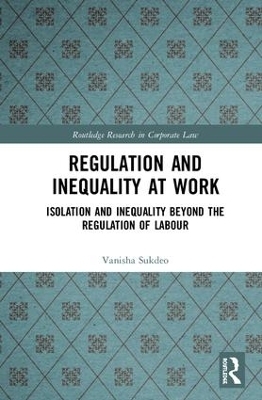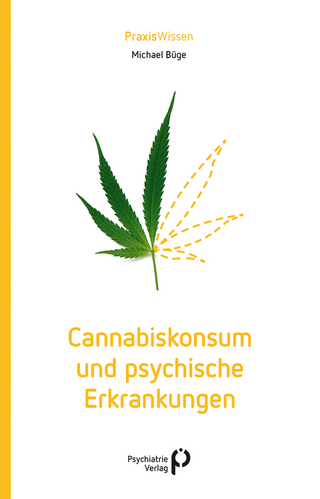
Regulation and Inequality at Work
Routledge (Verlag)
978-1-138-32342-1 (ISBN)
This book examines how the law has limitations to the extent that it can combat repression, isolation, and inequality. The main point the book explores is that isolation and inequality cannot be solved by driving up wages and having better working conditions. The true divide between management and workers is the inability of management to see the workers as people, and not just numbers. "The Swiss novelist Max Frisch remarked at the time, ‘We imported workers and got men instead.’" This encapsulates the dilemma of management – how to distance one’s self enough from workers to command respect yet not too distant as to be seen as inhumane. How can isolation and inequality within the workplace be overcome?
Regulation and Inequality at Work shows how workers can have an increased voice by using tools outside of the typical legal ones. Without state protection, the rights can be viewed as less stringent. Working outside the system allows for greater malleability and flexibility to be able to cater to individual workers in individual workplaces. Workers’ rights are about better working conditions, hourly wages, and benefits, but are also about being treated in a more civilized manner where one’s humanity is recognized. Only through all of these parts working together will a true version of workers’ rights emerge—one where workers are not viewed as mere tools but within and of the system itself. It shows the latest state of knowledge on the topic and will be of interest both to students at an advanced level, academics and reflective practitioners in the fields of business and company law, labour law, and employment law.
Vanisha H. Sukdeo is a Course Instructor of Law at Osgoode Hall Law School, York University, Canada.
Table of Contents
Acknowledgments
List of tables and figures
Overview of the book
Chapter One - Historical background
North America
The divergent paths of corporate law and labour law
Brief historical background of the corporation
Winnipeg General Strike
Workers in Developing Countries: Is An Obligation Implied or Imposed?
The Specter of the Specter of Marx
Workers’ Plight
1800s
1900s
2000s
Nike
Arm’s Length exploitation
On the factory floor
Neoliberalism and Ontario laws in the 1990s
Canadian legislation - the Ontario government under Harris
Bill 7 (1995)
Bill 31 (1998)
Bill 139 (2000)
Bibliography for Chapter One
Chapter Two - Current Structure of Labour and Employment Law
Canada
Right to Strike
Framework of Fairness Agreement
Recognition Strikes
The Framework of Fairness Agreement
Criticism of the FFA
Works Councils and the German Model
The German Model
Factory Occupations
U.S.A.
Precarious work
Independent Workers?
Employees, Workers, or something else entirely?
Everyone’s a critic - yet no one is in charge
Let me talk to your manager – wait, you don’t have one?
No manager. Who trained you?
Who is immune?
Wavering Work
Gigging the Economy: What’s Old is New Again
Platform capitalism and the new economy
Labour platforms
Uber and Seattle
Uber loses its license in London
Capital platforms
Workplaces and Work Spaces
Open offices
No workplace and just space
Technology and the ever-lengthening chain
Bibliography for Chapter Two
Chapter Three - How can the law be changed
Legislative framework
Fiduciary duty to workers
Fiduciary Duties
How traditional Corporate governance has failed workers
Corporations as Citizens
‘Good corporate citizen’ to ‘Good Samaritan corporation’
Good Samaritan Corporation
Layering governance
Employer Free Speech
Increasing labour standards on a worldwide level
International Labor Organization
Transportable Law/ Portable Law
Collective agreement as certification scheme
Consumer autonomy
Unifor and Community Chapters
Worker Voice
Governance Models
Codes of Conduct as Tools to Increase Workers’ Rights
Codes of Conduct
Codes versus Certifications *
Codes as corporate reformation
Governance
Ethics Codes
The Gig Economy or the Rig Economy?
Isolation and Inequality
Bibliography for Chapter Three
Chapter Four - Transnational Labour Regulation
Marxism
Marxism and the Law
Marx’s Theory of Alienation
Beyond Marx
Distancing
Compassion fatigue
Enlightened self-interest
Dignity and Respect
Kindness and empathy
Pro-friendly
Collectivity *
My Model Code of Conduct
Model Code of Conduct
1. Forced Labour
2. Child Labour
3. Wages and Benefits
4. Overtime
5. Working Hours
6. Working Conditions
7. Health and Safety
8. Harassment
9. Discrimination
10. Environment
11. Freedom of Association
12. Monitoring
13. Access to Facilities
Monitoring agencies
Worker Rights Consortium
Fair Labor Association
Bibliography for Chapter Four
Chapter Five - Conclusion
Codes of conduct
Disruptor and disruption
Reserve Army of Labour
Emotional Labour
Organizational Justice
There are limits to the law
Expansion of fiduciary duties
Not OK Computer: Automization and the Worker
Luddism
Not just numbers, they are men (and women)
Bibliography for Chapter Five
Index
| Erscheinungsdatum | 25.07.2018 |
|---|---|
| Reihe/Serie | Routledge Research in Corporate Law |
| Zusatzinfo | 2 Tables, black and white |
| Verlagsort | London |
| Sprache | englisch |
| Maße | 156 x 234 mm |
| Gewicht | 612 g |
| Themenwelt | Medizin / Pharmazie ► Medizinische Fachgebiete ► Psychiatrie / Psychotherapie |
| Recht / Steuern ► Arbeits- / Sozialrecht ► Arbeitsrecht | |
| Recht / Steuern ► EU / Internationales Recht | |
| Wirtschaft ► Betriebswirtschaft / Management ► Personalwesen | |
| Wirtschaft ► Betriebswirtschaft / Management ► Planung / Organisation | |
| ISBN-10 | 1-138-32342-X / 113832342X |
| ISBN-13 | 978-1-138-32342-1 / 9781138323421 |
| Zustand | Neuware |
| Haben Sie eine Frage zum Produkt? |
aus dem Bereich


